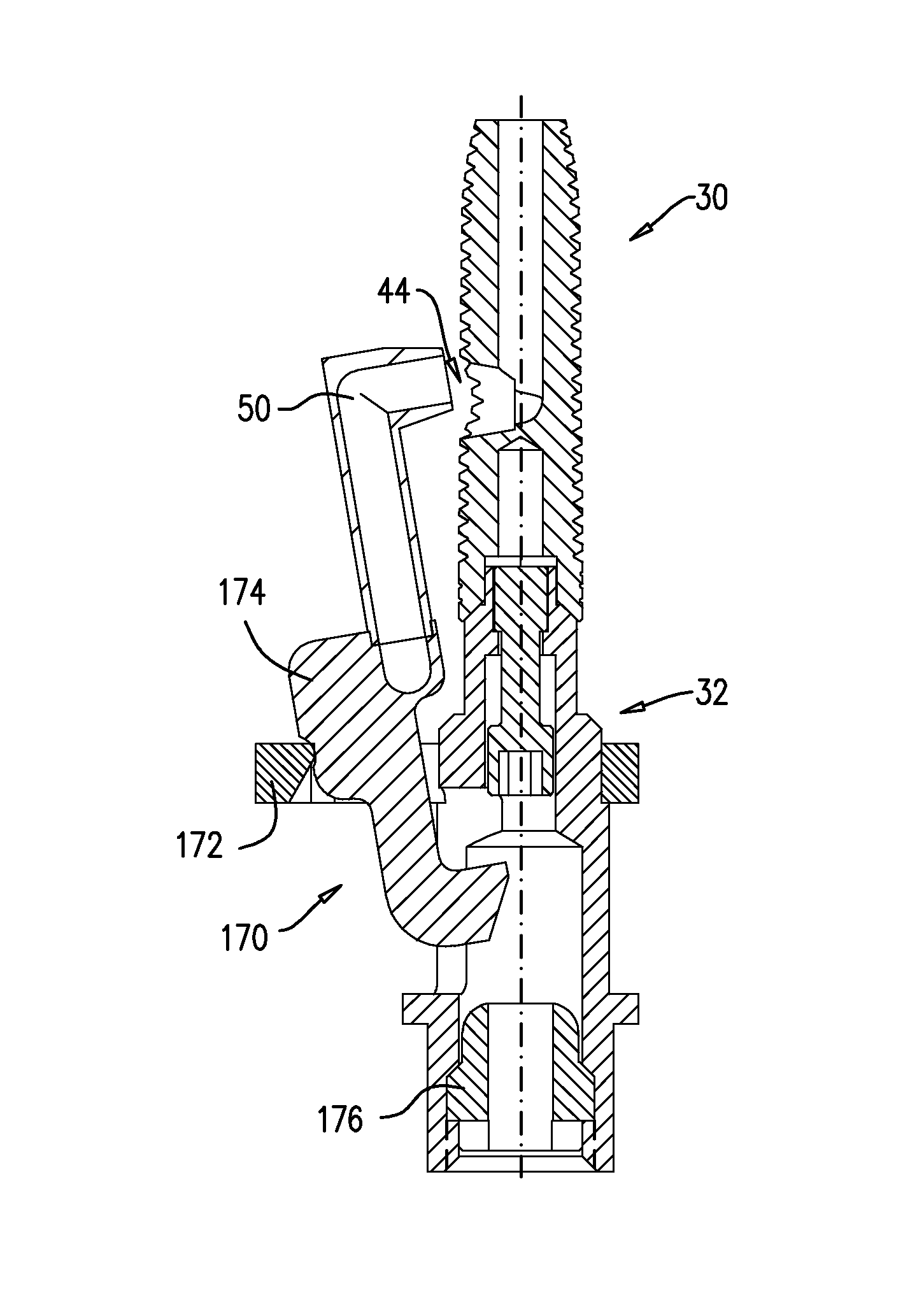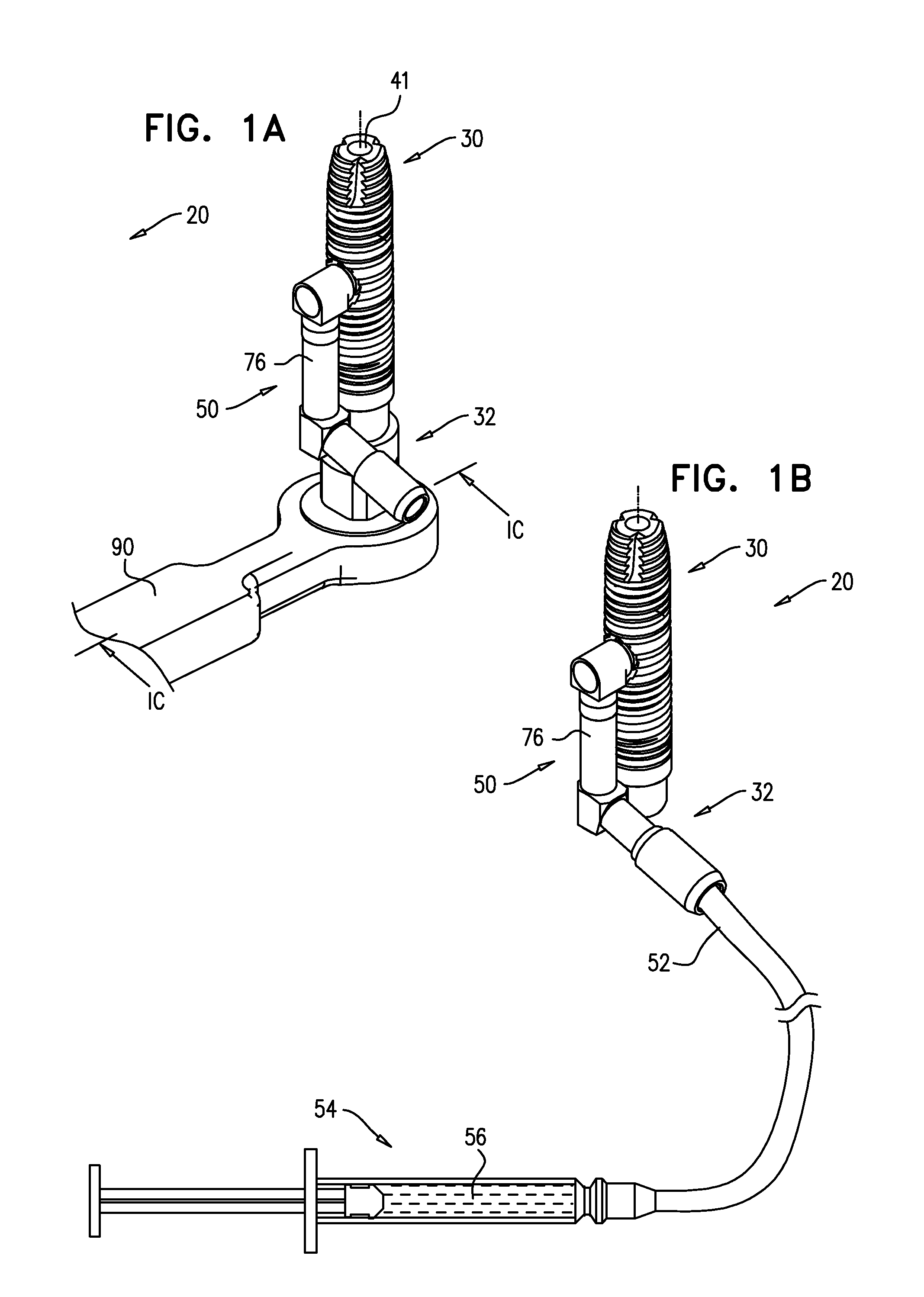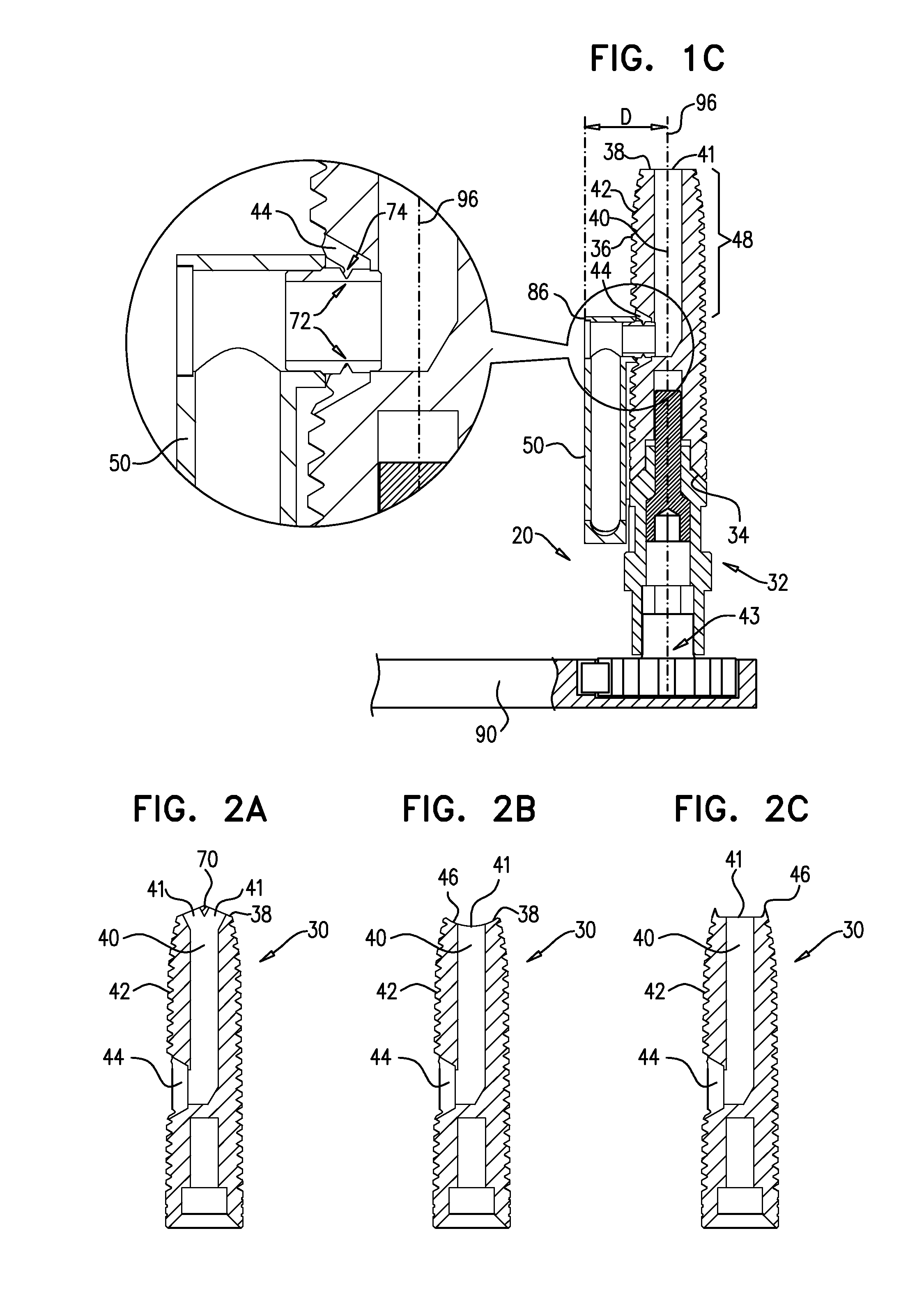Implants, tools, and methods for sinus lift and lateral ridge augmentation
a lateral ridge and lateral ridge technology, applied in the field of dental implants and implantation methods, can solve the problems of difficult surgical operation of bone augmentation procedures and the replacement of maxillary teeth, and achieve the effect of preventing the application of breaking torque and preventing the rotation of the distal tube end
- Summary
- Abstract
- Description
- Claims
- Application Information
AI Technical Summary
Benefits of technology
Problems solved by technology
Method used
Image
Examples
Embodiment Construction
[0170]FIGS. 1A-C are schematic illustrations of a dental implant system 20, in accordance with an embodiment of the present invention. FIGS. 1A-B are isometric views of the system, andFIG. 1C is a cross-sectional view of FIG. 1A along line IC-IC. System 20 comprises a dental implant 30, which is typically shaped so as to define a lumen 40 therethrough that is open through a distal opening 41 to a distal portion 48 of the implant that extends from a distal implant end 38 of the implant along up to 50% of a longitudinal length of the implant, such as up to 30% of the length, up to 15% of the length, or up to 5% of the length. For some applications, distal portion 48 has a longitudinal length of up to 8 mm, such as up to 6 mm, up to 4 mm, or up to 2 mm, e.g., 5 mm or 8 mm. As used herein, including in the claims, the “distal” end of the implant is the end that is inserted first into a bone, such as an alveolar ridge, and is sometimes referred to in the art as the apical end, and the “p...
PUM
 Login to View More
Login to View More Abstract
Description
Claims
Application Information
 Login to View More
Login to View More - R&D
- Intellectual Property
- Life Sciences
- Materials
- Tech Scout
- Unparalleled Data Quality
- Higher Quality Content
- 60% Fewer Hallucinations
Browse by: Latest US Patents, China's latest patents, Technical Efficacy Thesaurus, Application Domain, Technology Topic, Popular Technical Reports.
© 2025 PatSnap. All rights reserved.Legal|Privacy policy|Modern Slavery Act Transparency Statement|Sitemap|About US| Contact US: help@patsnap.com



